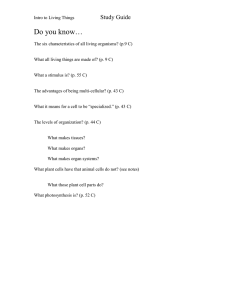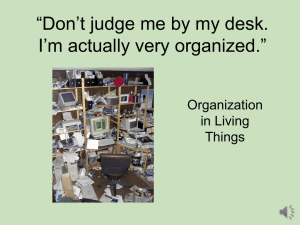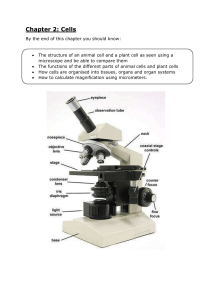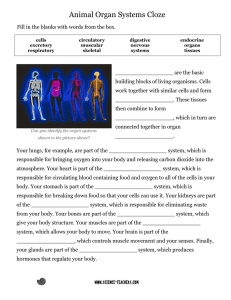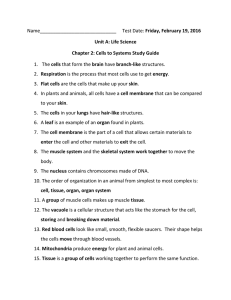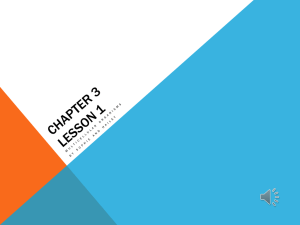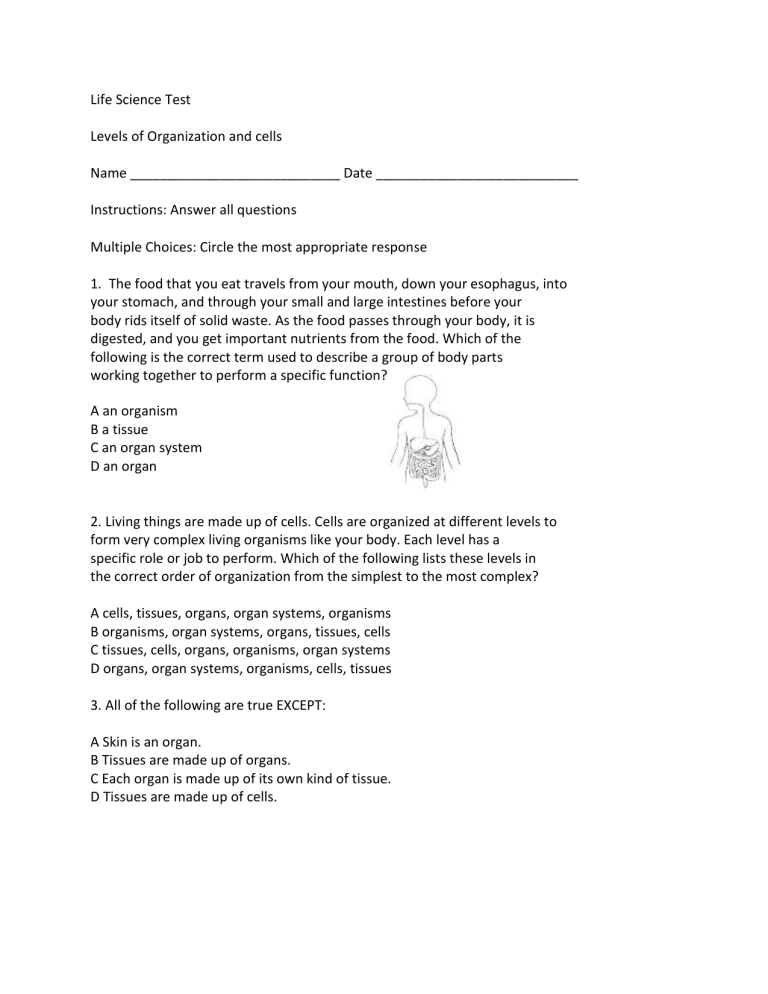
Life Science Test Levels of Organization and cells Name ____________________________ Date ___________________________ Instructions: Answer all questions Multiple Choices: Circle the most appropriate response 1. The food that you eat travels from your mouth, down your esophagus, into your stomach, and through your small and large intestines before your body rids itself of solid waste. As the food passes through your body, it is digested, and you get important nutrients from the food. Which of the following is the correct term used to describe a group of body parts working together to perform a specific function? A an organism B a tissue C an organ system D an organ 2. Living things are made up of cells. Cells are organized at different levels to form very complex living organisms like your body. Each level has a specific role or job to perform. Which of the following lists these levels in the correct order of organization from the simplest to the most complex? A cells, tissues, organs, organ systems, organisms B organisms, organ systems, organs, tissues, cells C tissues, cells, organs, organisms, organ systems D organs, organ systems, organisms, cells, tissues 3. All of the following are true EXCEPT: A Skin is an organ. B Tissues are made up of organs. C Each organ is made up of its own kind of tissue. D Tissues are made up of cells. 4. The three major parts of the circulatory system are the heart, the blood vessels, and the blood. The heart is an example of which level of organization? A cell B tissue C Organ D Organ system 5. Which phrase BEST describes the function of mitochondria? A located in the cytoplasm B bacteria-sized organelle C converts energy for cell use D contains a folded inner membrane 6. In what plant cell structure is water stored? A chloroplast B cell wall C vacuole D cytoplasm 7. Which of these structures is only found in animal cell? A chloroplast B cell membrane C vacuole D cytoplasm 8. What is the function of the cell wall? A to protect and support the cell B to perform different functions in each cell C to prevent water from passing through the cell. D to prevent oxygen from entering the cell 9. What kind of cell is A? A animal B plant C bacteria D virus 10. What kind of cell is B? A animal B plant C bacteria D virus 11. Complete the Levels of Organization: _________> ____________ > ___________ > ____________> ________> ____________> __________> _________________ > Organism [8] 12. What are the 3 explanations of the cell theory?[3] __________________________________________ __________________________________________ __________________________________________ Each part of a cell has a specific function. Below are the functions, fill in the blanks with the following parts of the cell. Some words may be used more than once. [14] (ribosomes, mitochondria, Golgi body, lysosomes, vacuole, Animal cells, Plant cells, chloroplast, nuclear envelop, cell membrane, nucleus, cell wall, cell membrane, vacuole) 1) Convert sugar into energy ________________________ 2) The “brains” of the cell, that directs cell activities and contains genetic material called chromosomes made of DNA ___________________ 3) Package and distribute proteins _______________________ 4) Contains digestive enzymes to help break down cell wastes _______________________ 5) Act like little UPS trucks as they deliver/distributes the packages (proteins) ____________________ 6) Uses sunlight to produce sugars (food) for plant cells ______________________ 7) Act like little garbage trucks to move around, pick up cell waste, and get rid of it _______________ 8) Stores wastes, nutrients, and water ______________________ 9) Encloses the nucleus like an envelope ______________________ 10) Rigid outermost layer in plant cells __________________________ 11) Larger storage organelle in plant cells than in animal cells ______________________ 12) "Intracellular highway" because it is used for transporting proteins from the ribosomes_________________________ 13) Cells that have nuclei, organelles such as chloroplasts, and cell walls made of cellulose ____________________ 14. Regulates what enters and exits the cell ______________________ Label the cell below by writing the parts on the lines provided [9] G D H C B E I A ______________________________ B ______________________________ C_______________________________ D_______________________________ E _______________________________ F _______________________________ G _______________________________ H_______________________________ I _______________________________ 1. ______ vacuole A. produces energy for the cell 2. ______ nucleus B. provides the cell rigidity; supports the cell’s shape 3. ______ cytoplasm C. captures energy from the sun for photosynthesis 4. ______ cell wall D. fills the space within the cell membrane 5. ______ chloroplast E. contains DNA, controls all cellular activities 6. ______ mitochondria F. stores liquids and wastes
